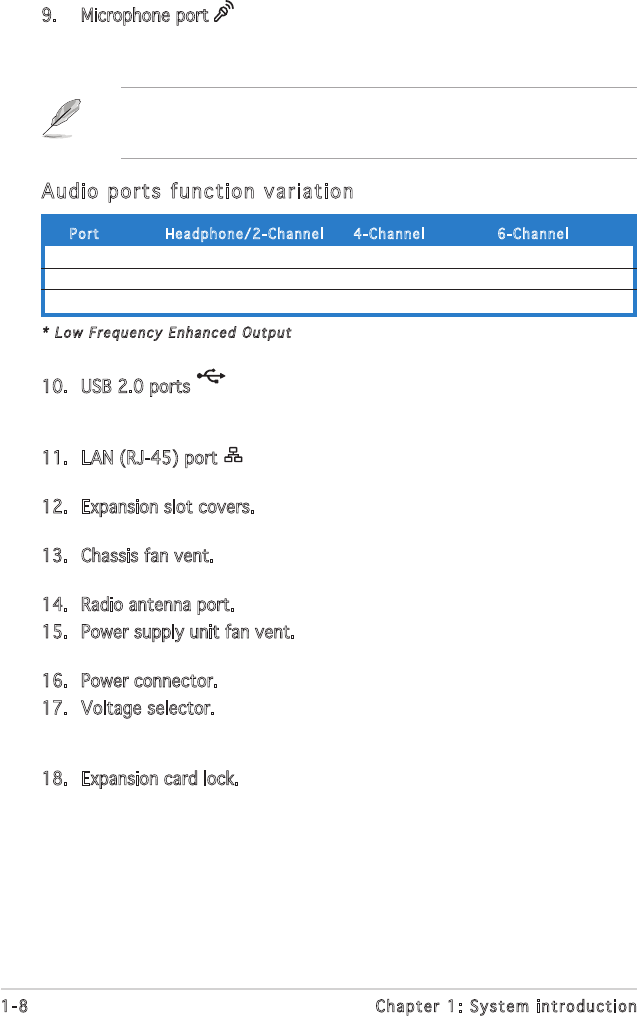
1-8
Chapter 1: System introduction
9. Microphone port . This Microphone (pink) port connects a
microphone. In 4/6-channel mode, the function of this port becomes
Low Frequency Enhanced Output/Center.
Audio ports function variation
10. USB 2.0 ports
2.0
. These Universal Serial Bus 2.0 (USB 2.0) ports
are available for connecting USB 2.0 devices such as a mouse, printer,
scanner, camera, PDA, and others.
11. LAN (RJ-45) port . This port allows Gigabit connection to a Local
Area Network (LAN) through a network hub.
12. Expansion slot covers. Remove these covers when installing expansion
cards.
13. Chassis fan vent. This vent is for the fan that provides ventilation
inside the system chassis.
14. Radio antenna port. This port connects a radio antenna.
15. Power supply unit fan vent. This vent is for the PSU fan that provides
ventilation inside the power supply unit.
16. Power connector. This connector is for the power cable and plug.
17. Voltage selector. This switch allows you to adjust the system input
voltage according to the voltage supply in your area. See the “Voltage
selector” section on page 2-25 before adjusting this switch.
18. Expansion card lock. This lock secures installed expansion cards. See
page 2-15 for details.
The functions of the Line Out, Line In, and Microphone ports change
when you select the 6-channel configuration. Refer to the table below
for audio ports function variation.
* Low Frequency Enhanced Output
Port Headphone/2-Channel 4-Channel 6-Channel
Light Blue Line In Surround Surround
Lime Line Out Front Speaker Out Front Speaker Out
Pink Mic In Mic In LFE Output*/Center


















